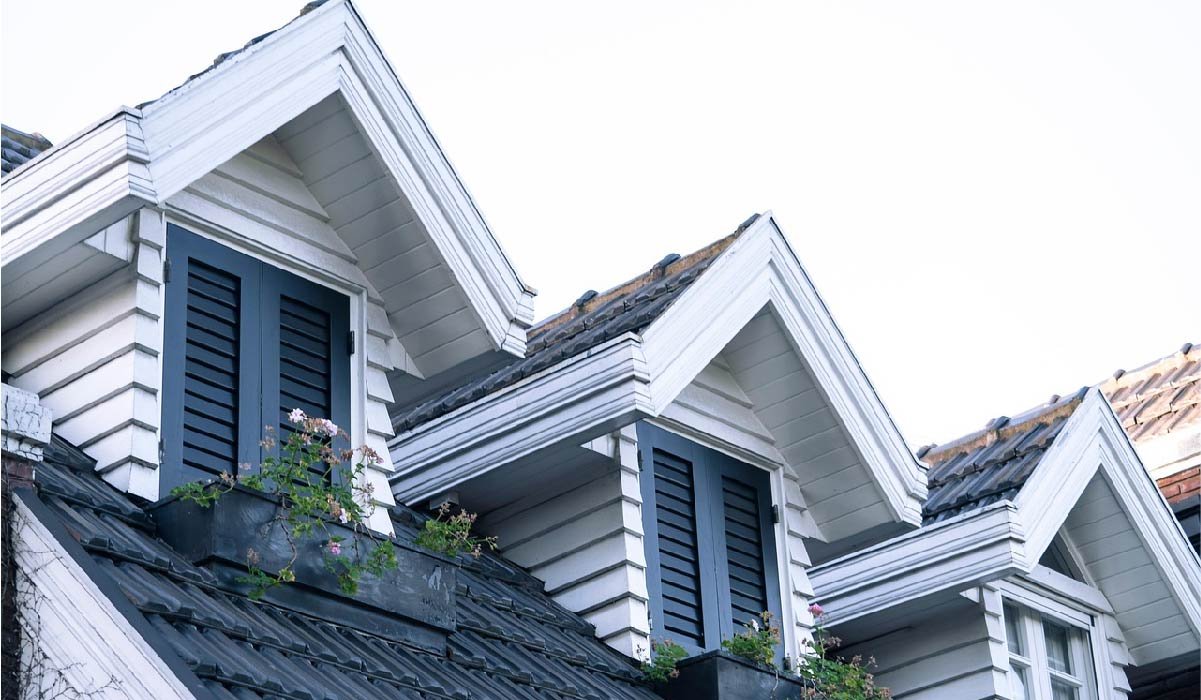Home Improvement
How Roof Ventilation and Insulation Work Together to Improve Home Comfort

A roof does much more than shield a home from rain and sunlight. It also plays a major role in how comfortable the home feels throughout the year. While many homeowners understand the importance of strong roofing materials, fewer realize that ventilation and insulation inside the attic are equally essential for maintaining indoor comfort and energy efficiency. These two components work hand in hand to regulate temperature, manage airflow, and prevent moisture-related problems. During inspections and maintenance visits, AG Exterior Solutions often highlights how proper ventilation and insulation lead to a more durable roof and a more comfortable home.
Ventilation and insulation may seem like separate systems, but they operate together to support the roof’s performance. Without proper balance, the attic can trap heat, accumulate moisture, or cause temperature fluctuations that spread throughout the home. These issues increase energy bills and contribute to premature roof wear. Understanding how these systems interact helps homeowners appreciate their importance and recognize when adjustments are necessary.
In addition to improving comfort, ventilation and insulation also protect the long-term health of the roofing system. When both components work correctly, the roof remains stronger, the home becomes more energy efficient, and unnecessary repairs are avoided. This creates a healthier environment and supports long-term savings.
Understanding the Relationship Between Ventilation and Insulation
Ventilation and insulation have distinct functions, yet they complement each other. Insulation helps regulate indoor temperatures by slowing down the transfer of heat between the home and the attic. Ventilation, on the other hand, circulates air to remove excess moisture and regulate attic temperatures. Together, these components maintain a stable environment that protects the home from temperature extremes.
When insulation is strong and ventilation is insufficient, moisture may accumulate in the attic, leading to mold or rot. When ventilation is strong and insulation is inadequate, indoor temperatures fluctuate and energy costs rise. Achieving a proper balance between the two is crucial for optimal performance.
Maintaining Comfortable Indoor Temperatures
Proper insulation helps keep heat inside the home during colder months and prevents heat from entering during warmer months. Ventilation supports this by preventing heat buildup in the attic. Without ventilation, the attic becomes extremely hot in the summer, causing heat to radiate downward into living spaces. This makes it harder to cool the home and increases energy usage.
When ventilation and insulation work together, indoor temperatures remain more consistent. The heating and cooling systems do not have to work as hard, and homeowners experience improved comfort year-round.
Preventing Moisture Buildup in the Attic
Moisture is one of the biggest threats to a roof’s longevity. When warm indoor air rises into the attic, it can condense on cold surfaces, especially during winter. This moisture can damage insulation, rot wood, and lead to mold development.
Ventilation helps prevent this by circulating air and removing excess humidity. Insulation supports moisture control by creating a thermal barrier that prevents drastic temperature differences between the attic and interior spaces. Together, they help maintain dry, stable conditions that protect the structure and materials.
Reducing the Risk of Ice Dams
In colder climates, poor ventilation and insulation contribute to the formation of ice dams. When warm air escapes into the attic, it melts snow on the roof. The melted water runs down and refreezes at the roof’s edge, creating a buildup of ice that blocks drainage. This can cause water to seep beneath shingles and lead to interior leaks.
Good insulation prevents heat from escaping into the attic, while proper ventilation maintains a more consistent temperature across the roof. This reduces the likelihood of ice dams forming and protects the home from winter-related roof damage.
Improving Energy Efficiency and Lowering Utility Costs
Energy efficiency is one of the greatest benefits of proper ventilation and insulation. When a home loses heat in the winter or absorbs heat in the summer, the HVAC system must work harder to maintain comfortable indoor temperatures. This increases energy consumption and raises utility bills.
Insulation provides resistance to heat transfer, while ventilation allows the attic to breathe, preventing heat buildup. This combination reduces strain on heating and cooling systems and leads to long-term savings. Homeowners experience more predictable energy costs and improved home comfort.
Enhancing Roof Longevity Through Temperature Control
The roof’s lifespan is significantly influenced by temperature fluctuations. When the attic becomes too hot, roofing materials expand and contract more rapidly, leading to premature aging. Excessive heat can cause shingles to curl or blister, while trapped moisture can weaken the roof deck.
Ventilation releases hot air, preventing temperature spikes that stress roofing materials. Insulation helps maintain stable temperatures beneath the roof. Together, they protect the roof from internal stress and extend its life. During roof evaluations, AG Exterior Solutions often identifies improper ventilation as a common cause of premature roof deterioration.
Supporting Indoor Air Quality and Home Health
Moisture and poor airflow contribute to mold, mildew, and airborne contaminants inside the home. Poor insulation may allow allergens to enter, while inadequate ventilation traps stale air. These conditions affect indoor air quality and can impact the health of the home’s occupants.
Balanced ventilation and insulation improve airflow while supporting clean and stable indoor conditions. This contributes to a healthier home environment by reducing the presence of moisture-related pollutants.
Identifying When Ventilation or Insulation Needs Improvement
Many homeowners do not realize there is an issue with their attic environment until visible symptoms appear. High energy bills, uneven temperatures, musty odors, or frequent roof repairs can indicate ventilation or insulation problems. Other signs may include condensation in the attic, ice formation on the roof, or aging insulation.
Professional assessments help determine whether updates or repairs are necessary. Inspectors evaluate airflow patterns, insulation levels, and potential blockages that prevent proper ventilation. Recommendations based on these findings help restore balance and improve home comfort.
Conclusion: A Balanced System Creates a Stronger, More Efficient Home
Ventilation and insulation are essential for maintaining roof health, home comfort, and energy efficiency. When both systems work together, they regulate temperature, prevent moisture buildup, and protect the roof from premature wear. Homeowners benefit from lower energy costs, better indoor air quality, and a stronger roofing system. With expert guidance and careful evaluation, AG Exterior Solutions helps homeowners achieve a balanced attic environment that enhances comfort and ensures long-term roof performance.
-

 Celebrity1 year ago
Celebrity1 year agoWho Is Jennifer Rauchet?: All You Need To Know About Pete Hegseth’s Wife
-

 Celebrity1 year ago
Celebrity1 year agoWho Is Mindy Jennings?: All You Need To Know About Ken Jennings Wife
-

 Celebrity1 year ago
Celebrity1 year agoWho Is Enrica Cenzatti?: The Untold Story of Andrea Bocelli’s Ex-Wife
-

 Celebrity1 year ago
Celebrity1 year agoWho Is Klarissa Munz: The Untold Story of Freddie Highmore’s Wife
















